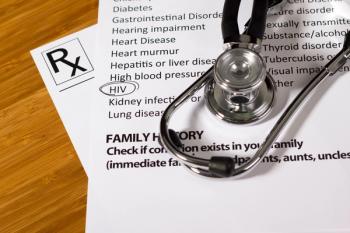
Flibanserin: Risk potential vs. possible benefit
Because of concerns about adverse effects, training through the Addyi REMS program is required for prescribers and pharmacies that want to participate in the medication use process for this drug.
Kathryn WheelerOn August 18, 2015, FDA approved flibanserin (
In October 2015, the manufacturer made the drug available by for prescribing and appropriate use. Because of concerns about adverse effects, training through the Addyi REMS program is required for prescribers and pharmacies that want to participate in the medication use process for this
Efficacy
Flibanserin is a 5-HT1A receptor agonist and a 5-HT2A receptor antagonist: As such, through unknown mechanisms it affects pleasure pathways of the brain and affects a woman’s sense of sexual desire.
The drug’s efficacy, which led to its FDA approval, was based primarily on three 24-week, randomized, double-blind, placebo-controlled clinical trials. Participants in these trials were premenopausal women experiencing significant distress or relationship difficulties due to acquired, generalized HSDD for at least six months and who previously had no concerns with sexual desire.
Participants received either 100 mg flibanserin (1,227 participants) at bedtime or placebo (1,238
Participants taking flibanserin had an average increase of 0.5 to 1.0 SSE per month compared to participants taking placebo. Measures of distress demonstrated that participants taking flibanserin “frequently” to “always” experienced distress related to low desire at baseline; by week 24, they experienced distress “occasionally” to “frequently.”
Safety
Flibanserin is not indicated for treatment of HSDD in postmenopausal women, for use in men, or for enhancement of sexual performance. Addyi carries a boxed warning citing severe hypotension and syncope, particularly when used by patients with hepatic impairment or when taken in combination with alcohol, moderate to strong CYP3A4 inhibitors, or certain herbal supplements. Flibanserin use is contraindicated in these circumstances.
Certified pharmacies may dispense flibanserin only pursuant to a prescription from a certified prescriber. Every patient must be counseled to abstain from alcohol during treatment with flibanserin to avoid the increased risk of syncope associated with concomitant use. In trials, the most common adverse effects associated with flibanserin included dizziness, nausea, tiredness, difficulty sleeping, and dry mouth.
A simulated driving impairment and cognition study was performed to evaluate the residual effects of bedtime flibanserin dosing on awakening the next day. In these tests, flibanserin demonstrated effects similar to placebo after seven hours of sleep. In light of these results, it might be prudent to counsel patients not to drive or perform tasks requiring attention within seven hours of taking flibanserin - at least until the patient knows how she will react to the
Dosage
Flibanserin 100 mg is administered as a single bedtime dose. Bedtime administration is intended to mitigate the drug’s hypotensive and CNS depressive effects. Pharmacokinetic studies of flibanserin used at a dose of 50 mg daily in patients with renal impairment (n=16) indicate minimal change in exposure to flibanserin compared to responses of healthy participants.
Patients should be instructed to skip any missed dose and to take their next scheduled dose at the appropriate time to avoid increased levels of flibanserin, which could increase the risk of syncope and fall-related injury. Patients who experience lightheadedness or dizziness should be advised to lie down and to report any loss of consciousness to their prescriber. Patients should discontinue treatment with flibanserin after eight weeks if no symptom improvement has been detected.
Kathryn Wheeler is associate clinical professor, Pharmacy Practice, University of Connecticut School of Pharmacy, Storrs, Conn.
Newsletter
Pharmacy practice is always changing. Stay ahead of the curve with the Drug Topics newsletter and get the latest drug information, industry trends, and patient care tips.

















































































































